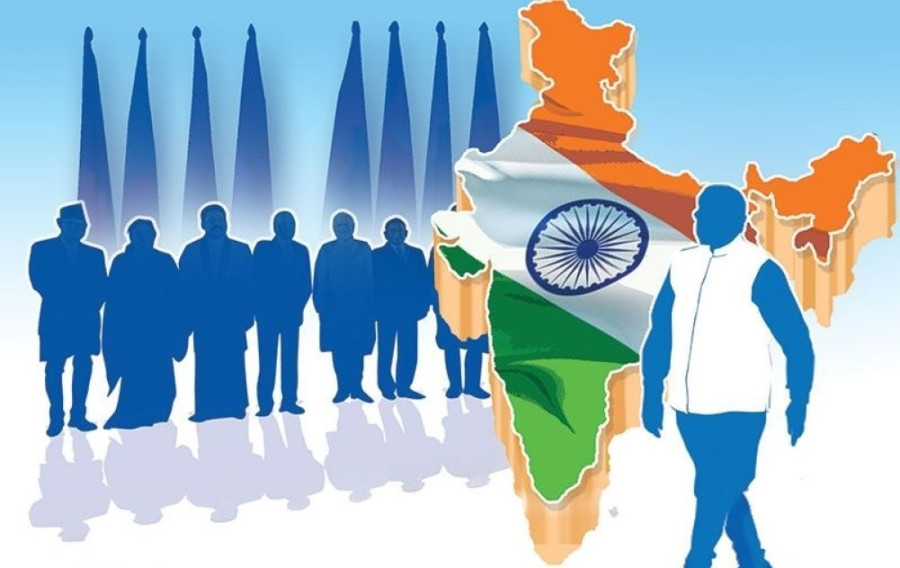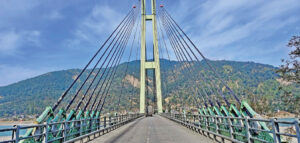
The emotional turn of occasions in Bangladesh has stunned numerous individuals. But the story, for the Nepalis, is all as well commonplace. Nepali political pioneers, counting previous rulers, have not contrasted from the ousted Bangladeshi Prime Serve Sheik Hasina. All of them have obscured the lean line between popular government and absolutism and between great administration and misrule.
What is indeed more striking is the part of India and questions approximately its remote policy.
India’s “pragmatic” remote approach was, to a expansive degree, dependable for encouraging Hasina’s absolutist propensities, making her impenetrable to the requests of vote based system and the developing goals of the modern generation.
Given Bangladesh’s area and key significance, India had numerous superseding concerns and security imperatives.
Hasina got to be India’s trusted partner. Given her verifiable and individual relations with India, it was simpler for her to identify with them. India’s back for Hasina and the Awami Association (AL) shows up consistent, given the reality that her party has served India’s vital and financial interests.
However, in the final circular of decisions, Bangladeshi individuals seen that India had straightforwardly sided with the AL. India attempted to persuade the restriction Bangladesh Patriot Party to take portion in the races but without victory. India at that point backed AL’s endeavor to hold the races against the wishes of the bigger respectful society in Bangladesh. As a result, the voter turnout was exceptionally moo and broad abnormalities were reported.
Despite Western nations like the US communicating concerns around the authenticity of the decisions, India was instrumental in encouraging authenticity to the pretense race comes about. Developing disillusionment with Hasina gave a fillip to anti-India assumptions among the people.
India’s remote approach, in the final decade, has attempted to recast itself in terms of logic and adaptability, centered exclusively on India’s key interface. In his book, The India Way, India’s Serve of Outside Undertakings, S Jaishankar, clarifies the thought of “Krishna’s Choice” as being resolute by the collateral results. This implies centering on the self-defined “righteous” objectives or maybe than on the honesty of the means.
Adopting such a remote approach ignores the inescapability of anti-India opinions in South Asia. As per Jaishankar’s reasoning, India does not require to be prevalent, it fair needs to secure its interests.
Such considering is sensible. In spite of a noteworthy level of anti-India estimation in South Asia, India’s control and nearness stay significant. It has learnt to secure its interface, in show disdain toward of threatening governments.
However, if India needs to claim administration as a territorial control in South Asia and past, stand up to worldwide standards, and keep up solidness in the locale, it must embrace vote based system as a column of its remote arrangement. India’s outside approach objectives must adjust with the neighbourhood’s broader interface, especially vote based system and financial development.
Without adjusting with vote based system, “pragmatism” in its outside arrangement can as it were convey short-term strategic picks up that may rapidly be upset. On the other hand, organizing law based values and putting the interface of the individuals or maybe than the governments can ended up a long-term developmentally steady strategy.
Perspectives from Nepal may offer a few bits of knowledge into India’s developing part in the locale and how individuals from Nepal see India’s outside policy.
From a Nepali viewpoint, India’s outside arrangement, in its current state, is tricky. For case, in later a long time, India has not wavered to enable Nepali legislative issues and lawmakers that have hampered majority rule values, advanced imbalance and hurt people’s interests.
India has been conducting its outside approach in Nepal in three noticeable ways. The to begin with is by locks in with the government, anything the affinity of the administering administration and utilizing all accessible leverages and powers to guarantee that the party in control remains “friendly.”
This procedure has regularly hampered the endeavors of the Nepali individuals to democratise the parties and the nation. India’s accentuation on this strategy has given rise to anti-Indianism as a political stage and as a include of open psychology.
There is too a more evil Cold War period fashion of engagement. In locks in with Nepal’s political parties and administering administrations, India has regularly turn to its insights wings, whose brash and open mediations have intensified anti-India assumptions and spread them to the grassroots level.
Every modern government in Nepal looks for India’s back to guarantee its life span. In a later closed-door discussion, senior party pioneers told us that amid state visits, Nepali prime priests are beneath huge weight to illustrate that India bolsters them and that their visit is a victory. They fear that without India’s back no government can anticipate to be durable.
Another way India has cashed in is by supporting political developments. This has moreover had blended comes about. When India sided with Nepal’s majority rule powers against the Lord in 1989-90 as well as in 2005, it infuriated the monarchist and patriot strengths. Additionally, in 2015, when it sided with the Madhesh development, it irritated the slope individuals and hill-centric parties, moving them closer to China.
The third way India has conducted its two-sided relations is through network and advancement strategy. India has continuously accomplished “irreversible” reciprocal relations with Nepal through the technique of moved forward network, exchange and financial integration.
For illustration, in later a long time, India and Nepal have worked on Coordinates Check Posts (ICPs), hydro-power ventures, petroleum pipelines, installment doors and transmission lines. These shapes of network are continuously making it more troublesome for Nepal to swing between India and China as in the past.
In arrange to maintain its picks up, India must illustrate that its values adjust with the interface of majority rule government and the yearnings of the more youthful era in the neighborhood. Such values expand to financial uniformity, human rights, equity, personality legislative issues and secularism. Tragically, the affect of the Indian government’s affiliation with the Hindutva development has spilled over borders; it has estranged Muslim populaces in the neighborhood, counting in Nepal and Bangladesh.
The case of Bangladesh moreover appears that if Hasina had fortified law based values and teach, the social arrange in Bangladesh would not have come beneath strain indeed now.
Another major figure why India must underline vote based system and adjust itself to people’s interface in South Asia is the nearness of China.
China is holding up on the sidelines, awaiting its time, prepared to jump on the openings missed by India.
Experts and policymakers in India do not accept China can pick up get to to the Indian advertise, given the current state of Sino-India relations and border debate. But China is not fazed. It is certain that it has secured its intrigued in Tibet vis-à-vis Nepal. Presently, it has its eyes on the Indian showcase. China’s perseverance in contributing in border framework in Tibet, as well as in the Trans-Himalayan Multi-Dimensional Network Arrange, appears its long-term methodology and certainty in its capacity to pick up get to to South Asia.







